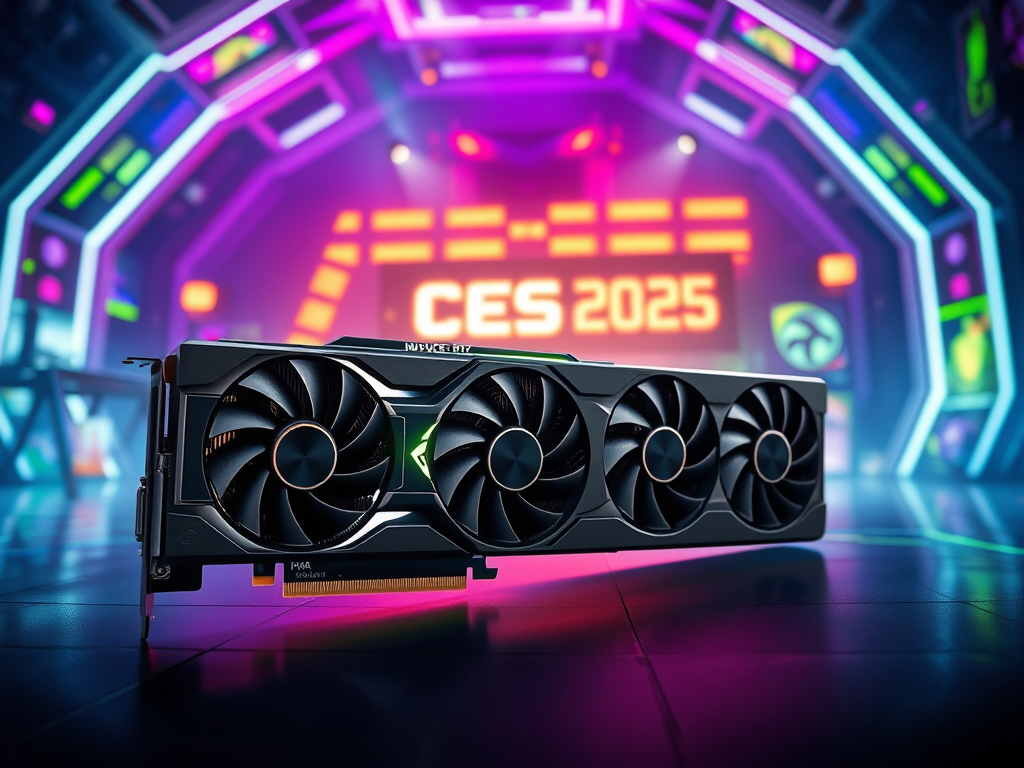At the Consumer Electronics Show (CES) 2025, held in Las Vegas, Nvidia made significant waves with a series of groundbreaking announcements that emphasize its leadership in artificial intelligence (AI), gaming technology, and robotics. CEO Jensen Huang’s keynote address on January 6, 2025, unveiled innovations that are set to shape the future of technology across various sectors.
Introduction of the GeForce RTX 50 Series
One of the most anticipated announcements was the launch of the GeForce RTX 50 series graphics cards, which are built on the new Blackwell GPU architecture. This series includes models such as the RTX 5090 and RTX 5080, designed to deliver unprecedented performance and visual realism for gamers and content creators alike. The RTX 50 series features fifth-generation Tensor Cores and fourth-generation Ray Tracing Cores, enhancing real-time ray tracing capabilities and AI-driven graphics rendering.
The new DLSS 4 (Deep Learning Super Sampling) technology was also introduced, which employs a technique called Multi Frame Generation. This innovation allows for performance boosts of up to eight times by generating additional frames through AI processing. Moreover, Nvidia Reflex 2 aims to reduce latency in gaming by up to 75%, providing a smoother experience for competitive gamers.
Advancements in AI and Robotics
Nvidia’s commitment to AI was evident in several key announcements related to robotics and autonomous systems. The company introduced its Cosmos platform, a world foundation model designed for developing physical AI systems such as robots and autonomous vehicles. This platform allows businesses to simulate real-world conditions virtually, enabling the training of AI models without the need for costly physical prototypes or extensive road testing.
Additionally, Nvidia unveiled its new AI superchip, named GB10, which is a compact version derived from the more robust GB200 platform. The GB10 integrates a single Blackwell GPU with a Grace CPU, making it suitable for desktop applications under the initiative known as Project DIGITS. This project aims to democratize access to high-performance AI computing by placing powerful AI capabilities directly on developers’ desktops.
Partnership with Toyota
In a strategic move to bolster its presence in the automotive sector, Nvidia announced a partnership with Toyota aimed at enhancing automated driving technologies. This collaboration will leverage Nvidia’s DRIVE AGX platform, integrating advanced AI capabilities into Toyota’s next-generation vehicles. The partnership underscores Nvidia’s commitment to making autonomous driving safer and more efficient through cutting-edge technology.
Enhancements for Content Creators
Nvidia also focused on content creators during its CES presentation. The new RTX 50 series includes enhancements for video encoding and decoding, allowing creators to work with high-resolution video streams more efficiently. The updated NVENC encoders can encode HEVC (High-Efficiency Video Coding) video up to 5% faster than previous models, while the enhanced decoder can simultaneously handle multiple streams of high-quality video.
The Nvidia Broadcast app received updates that introduce new features aimed at streamers and content creators, including virtual backgrounds and noise removal tools powered by AI. These advancements are expected to significantly improve live streaming quality and user engagement.
Emphasis on Physical AI
Huang emphasized that we are entering an era of “physical AI,” where systems can perceive their environment, reason about it, plan actions, and execute tasks autonomously. This shift is exemplified by Nvidia’s focus on developing AI agents capable of operating in real-world scenarios, from industrial automation to consumer robotics.
The keynote highlighted how Nvidia’s GPUs and platforms are central to this transformation across industries such as gaming, robotics, and autonomous vehicles. Huang stated that “AI will be mainstream in every application for every industry,” reinforcing Nvidia’s role as a leader in this evolving landscape.
Conclusion
Nvidia’s announcements at CES 2025 reflect its ambition to drive innovation across multiple sectors through advanced graphics technology, robust AI capabilities, and strategic partnerships. With the introduction of the GeForce RTX 50 series, enhancements for content creators, and breakthroughs in robotics and autonomous driving technologies, Nvidia is not only solidifying its position in gaming but also paving the way for future advancements in AI applications.
As we look ahead to 2025 and beyond, these developments signal an exciting era where AI becomes increasingly integrated into everyday life, transforming how we interact with technology in profound ways. Nvidia’s vision for a future powered by intelligent systems is becoming more tangible with each announcement, positioning the company at the forefront of technological innovation.


Leave a Reply